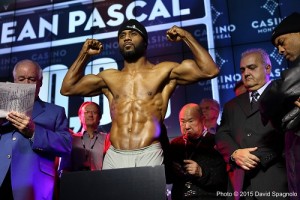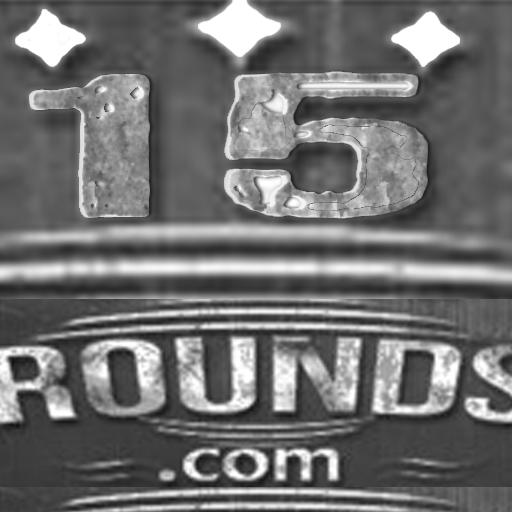By Norm Frauenheim-

Boxing’s ugly history repeated itself, warts and all, with Jean Pascal calling Sergey Kovalev a racist in the final news conference before their rematch Saturday night at Montreal’s Bell Centre.
I’m not sure what to make of it. The cynical side of the scarred business suggests that Pascal’s accusation is just another way of marketing a tough sell in his hometown.
Late Thursday, seats in every corner of the building, other than the pricey ones at ringside were available on the Bell Centre’s website.
Pascal, who has been calling Kovalev a racist since the light-heavyweight fight (HBO 9:45 p.m. ET/PT) was announced, raised the volume by several octaves with a performance that included bananas and a near brawl with Kovalev’s African-American trainer, John David Jackson. If Pascal was looking for twitter hits and website headlines, he got them.
Kovalev, an unbeaten Russian and a pound-for-pound contender, left himself open to the charge last April when he posed for a photo with a child in a T-shirt adorned with a boxer topped by a gorilla’s head. At the bottom of the photo, Kovalev wrote a caption that took aim at Adonis Stevenson, who like Pascal is a Quebec light-heavyweight of Haitian descent.
It says: “Adonis looks great!!!’’
It’s stupid.
Kovalev, long frustrated by the inability to land a fight with Stevenson, apologized. In this polarized era, however, apologies aren’t believed. They don’t last long either. But that photo isn’t going anywhere. It’s only a few keystrokes away for any rival who wants to use it as evidence to support an allegation.
In words and tone, Kovalev (28-0-1, 25 KOs) suggests that Pascal (30-3-1, 17 KOs) is calling him a racist out of fear or in an attempt at gamesmanship. If it’s the latter, Pascal is making a terrible mistake.
Kovalev is not easily distracted. The photo was dumb. The caption was dumber. But nobody has detected anything dumb in the way Kovalev fights. He is as poised as he is ruthless.
Bernard Hopkins, one of the game’s wise men, knew that instinctively throughout the all the hype before their 2014 fight. He didn’t do any of his trademark trash-talk, a Hopkins art form. He had read Kovalev well enough to know it wouldn’t work. Nothing did. Kovalev won a crushing decision and Hopkins, who was widely criticized for calling Joe Calzaghe “a white boy,” praised him in its aftermath.
It’s also noteworthy that Hopkins defended Kovalev after the photo appeared. Hopkins was quoted as saying he didn’t believe the Russian was racist. However, he also said that Kovalev would regret it.
Regret, race and, yes, racism have been part of the boxing narrative for as long as there has been an opening bell. It produced The Great White Hope more than a century ago in a segregated society’s desperate attempt to find a white heavyweight who could beat Jack Johnson.
To this day, Mexican fans chant “Guero.” Loosely translated, that means White Boy. Those fans will chant it, in singsong fashion, at almost any fighter of any color without a chance and/or the willingness to brawl. A racist slur? Depends on the listener. From this white face in a ringside seat, it’s merely a genuine expression from a crowd with a tribal-title loyalty for a fighter it knows like a neighbor.
In 1975, Muhammad Ali mocked Joe Frazier with a toy, a rubber gorilla that he tied onto a string and playfully battered around during a news conference before he beat Frazier in the Philippines.
“It’s going to be a Thrilla In Manila when I kill that Gorilla,’’ Ali said then.
Ali probably cringes now, which is what Pascal and Kovalev will probably do years from now.











